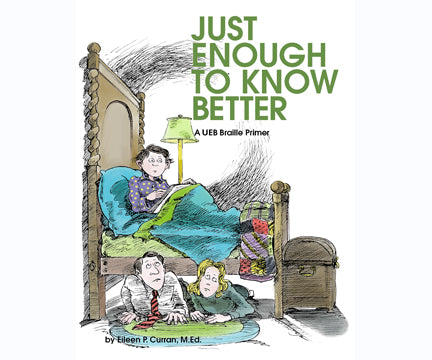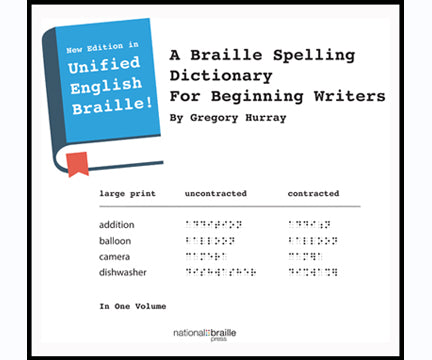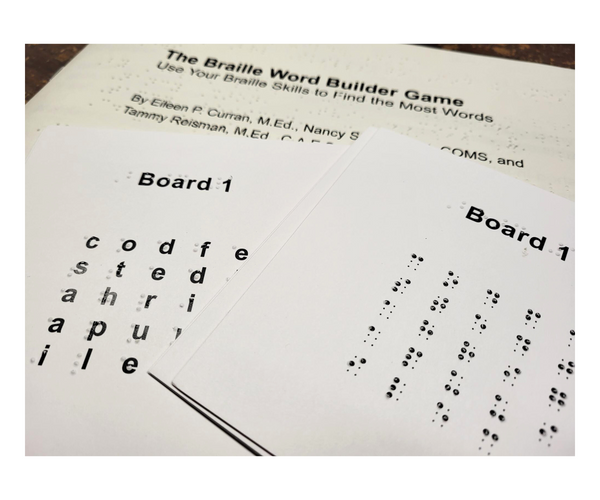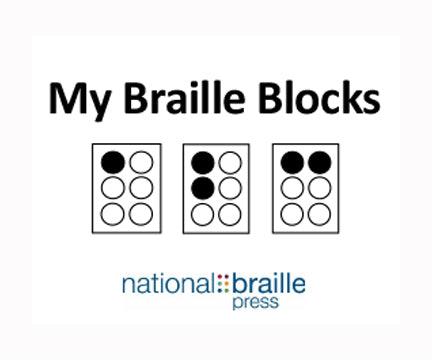Best Practices in Creating Tactile Graphics
- Brand: National Braille Press
- Availability: In Stock
- SKU: BEST-PRACT
$20.00
Making Tactile Graphics for Your Child or Student Whether you are a teacher, parent, or guardian of a blind or low vision child, this book can teach you the general best practices for creating tactile graphics and promoting tactile graphics literacy. Tammy Reisman, a teacher of students with visual impairments...
Making Tactile Graphics for Your Child or Student
Whether you are a teacher, parent, or guardian of a blind or low vision child, this book can teach you the general best practices for creating tactile graphics and promoting tactile graphics literacy. Tammy Reisman, a teacher of students with visual impairments for 30 years, clearly explains what tactile graphics are; why they are important; how they are read; and when they should or shouldn't be made. Coverage includes: BANA guidelines at a glance; steps to planning readable tactile graphics, including the use of a decision tree and coverage of 8 major design concepts; methods and materials for creating tactile graphics; how to teach tactile graphic literacy skills to children; teaching children to make their own tactile graphics; and much more. Each chapter opens with a teacher or student portrait and closes with a key-takeaways section summarizing the most important points covered in each chapter.
Click here for examples of the tactile graphics referred to in this book.
Table of Contents
Introduction
Portrait of a Student
What Are Tactile Graphics?
What Is the Purpose of Tactile Graphics?
How Do You "Read" a Tactile Graphic?
Why Are Tactile Graphics Important?
Should All Print Images Be Made into Tactile Graphics?
Quotes from Kids
Key Takeaways
Guidelines at a Glance
Portrait of a TVI
Braille Authority of North America (BANA) Guidelines
When to Make a Tactile Graphic
Basic Principles to Consider
Key Takeaways
Steps to Planning a Readable Tactile Graphic
Portrait of a Student
Tactile Graphics Decision Tree
8 Major Concepts in Tactile Graphics Creation
Focus
Texture
Size and Scale
Consistency
Orientation and Sequence
Braille
Color
Perspective
Other Considerations
Key Takeaways
Creating Tactile Graphics
Portrait of a Student
Methods and Materials for TVIs and Blindness Paraprofessionals
Quick-Draw Paper
TactileDoodle
DRAFTSMAN Tactile Drawing Board
Picture Maker Wheatley Tactile Diagramming Kit
Tactile Graphics Kit
Various Collage Materials
Sensational Black Board
Magnetic Sheets
Tactile Maps Automated Production (TMAP)
Methods and Materials for Professional Transcribers and Tactilists
Computer-Generated Tactile Graphics
Microcapsule Paper and Swell Form Machine
Thermoform
Key Takeaways
Teaching Tactile Graphic Literacy Skills to Children
Portrait of a Student
Developing Effective Skills for Reading Tactile Graphics
Exposure, Experience, and Exploration
The Progression of Learning
Systematic Approach, Previewing, and Vocabulary
Fun Activities
Stacking/Building
Matching
Same and Different
Spatial Relationships
Tracing Lines
Sequencing
Coloring
Object Hunts
Puzzles
Dot to Dots
Games
Key Takeaways
Teaching Children to Create Their Own Tactile Graphics
Portrait of a Student
Beginning Skills
Advanced Skills: Shapes, Lines, and Angles
Ingredients for Success in Learning
Key Takeaways
Final Thoughts
References

 Contact
Contact Login
Login
 LOG IN
LOG IN
 SEARCH
SEARCH








